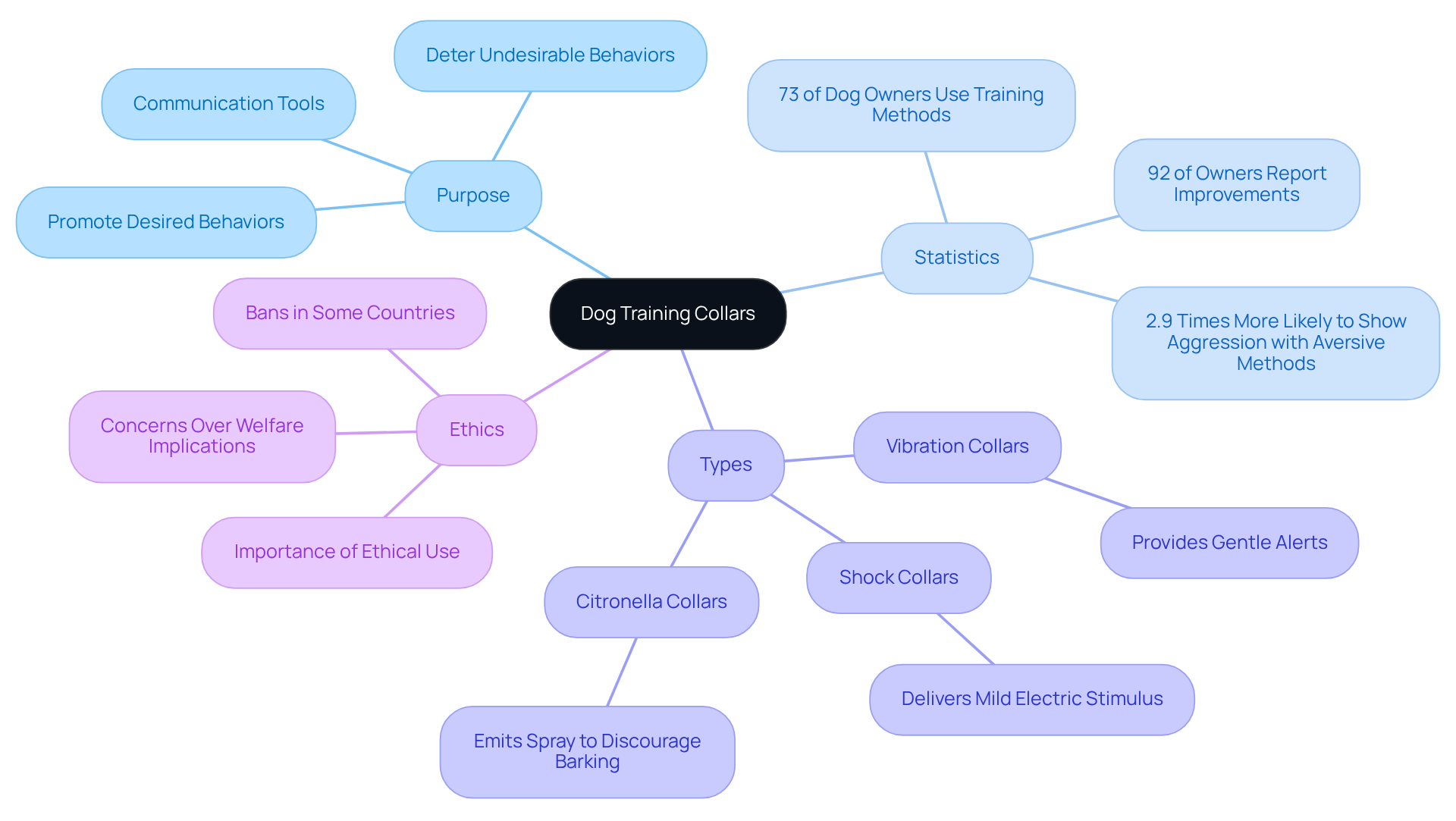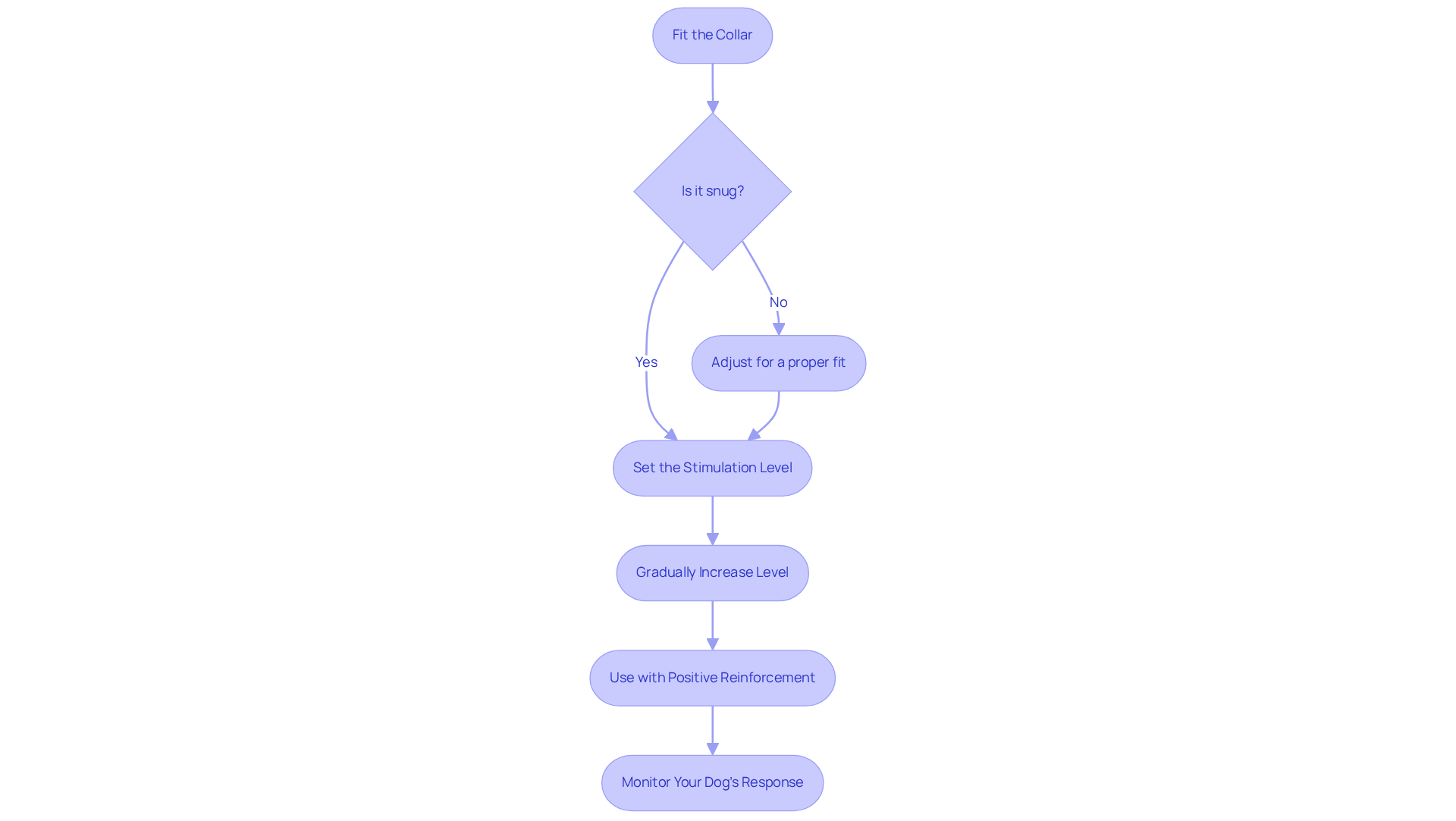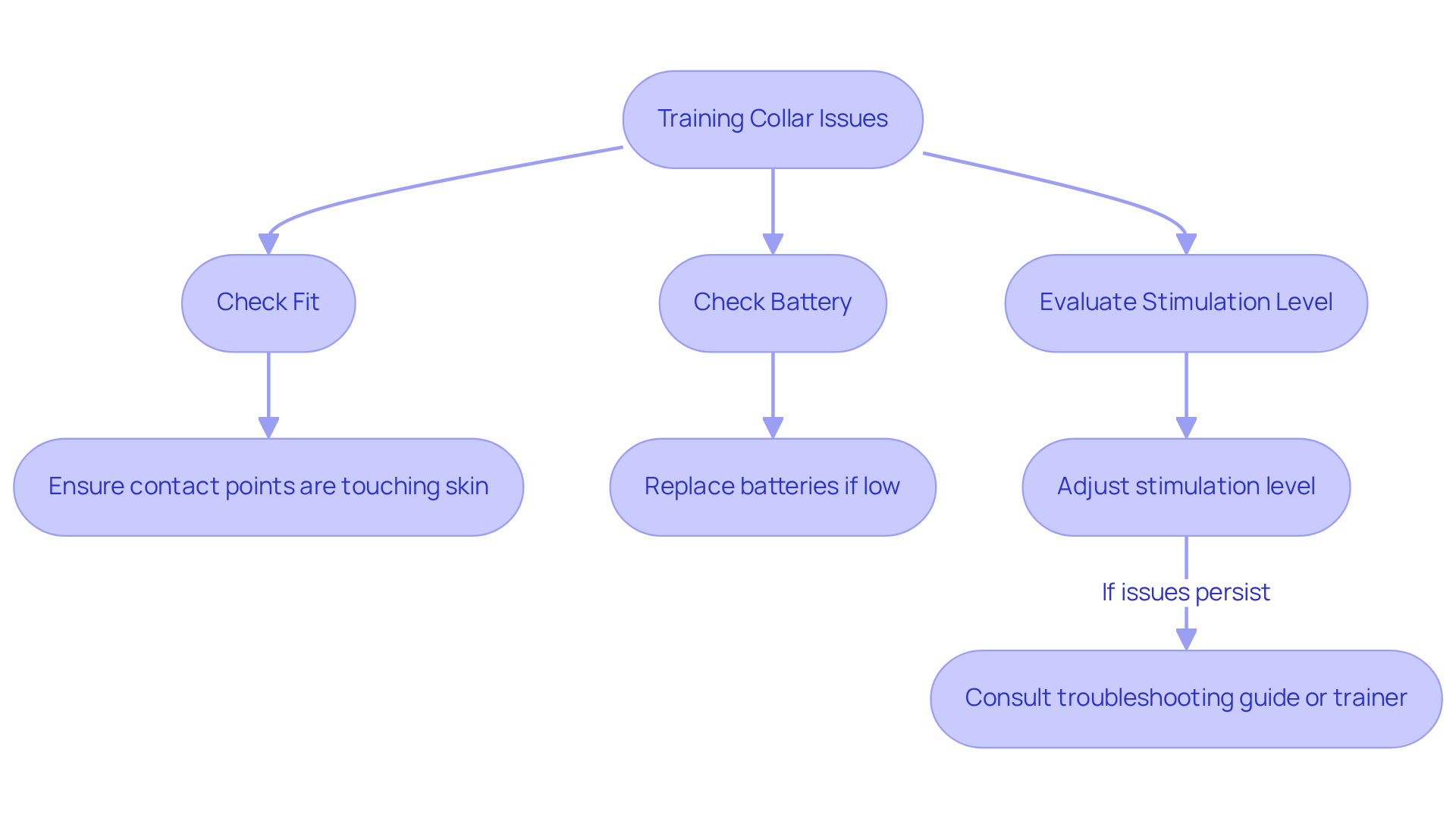Master the Dog Training Collar: Essential Steps for Success
Overview
The main focus of this article is to guide pet owners on the effective and ethical use of dog training collars, ensuring a nurturing environment for their furry family members. It highlights that while these collars can significantly enhance obedience when paired with positive reinforcement techniques, they must be used responsibly. This approach not only prevents potential behavioral issues but also prioritizes the well-being of your beloved pets. Research and expert opinions throughout the article support this compassionate perspective, reassuring you that your dog’s happiness and health are at the forefront of this training journey.
Introduction
Understanding how to effectively use a dog training collar can truly transform the training experience for both you and your furry family member. These specialized tools, when used ethically and responsibly, not only enhance obedience but also foster a deeper bond between dogs and their humans. However, we recognize that with various types of collars available and ongoing debates about their ethical implications, many pet owners may find themselves questioning the best practices for their use.
How can you navigate the complexities of training collars to ensure a positive and effective training journey for your beloved companion?
Understand the Basics of Dog Training Collars
Dog devices, often known as dog training collars or remote tools, are specialized instruments designed to assist in educating your furry family members. They provide stimuli that promote desired behaviors or deter undesirable ones, serving primarily as communication tools rather than punitive instruments. When used properly, these devices can enhance the effectiveness of instruction by combining feedback with positive reinforcement, fostering a balanced approach to behavior modification.
In 2025, approximately 73% of dog owners employed some form of guidance method, with many incorporating a dog training collar into their routines. Research indicates that canines trained with a dog training collar often show improvements in obedience, especially when paired with reward-based techniques. For example, a recent study revealed that 92% of owners observed behavioral enhancements in their dogs after training, underscoring the potential effectiveness of these tools when used responsibly.
Understanding the various types of neckwear, such as a dog training collar, available is crucial for selecting the right option for your dog’s unique needs. Options for a dog training collar include:
- Shock collars, which deliver a mild electric stimulus
- Vibration collars, which provide a gentle alert
- Citronella collars, which emit a spray to discourage barking
Each type serves distinct purposes and can be effective in different training scenarios.
Experts stress the importance of using a dog training collar ethically. Many instructors advocate for constructive reinforcement strategies, noting that canines trained with aversive methods are 2.9 times more likely to exhibit aggressive behaviors compared to those trained with positive reinforcement. The consensus among professionals is that while a dog training collar can be beneficial for training, it should be used with care and in conjunction with constructive methods to ensure the well-being of your beloved pet.
Recent discussions within the pet care community have heightened awareness about the welfare implications of e-collar use. Some countries have even banned these devices due to concerns over potential distress in dogs. As Jonathan J Cooper from the University of Lincoln remarked, “These findings indicate that there is no consistent advantage to be achieved from e-collar methods but greater welfare issues compared with positive reward-based approaches.” As the pet industry evolves, embracing responsible pet ownership and educational practices remains vital, ensuring that tools like e-collars contribute positively to the learning experience of your furry family members.

Determine the Right Age for Using a Dog Training Collar
Many producers recommend that your furry family members be at least six months old before introducing a collar for instruction. At this stage, dogs typically possess the maturity and mental growth necessary to respond appropriately to training signals. However, it’s important to remember that each dog’s readiness can vary based on their temperament and past learning experiences. For instance, some dogs may be ready for harness instruction earlier, especially if they’ve completed basic obedience training.
It’s essential to observe your dog’s behavior closely; signs of fear or anxiety might suggest waiting until they demonstrate greater confidence and comfort with basic commands. Initial training should focus on positive reinforcement methods, as advocated by experts like Dr. Ian Dunbar and Pat Miller. This approach helps establish a strong foundation before considering the use of any training tools.
Furthermore, please keep in mind that shock devices should not be worn for extended periods to avoid skin irritation. By prioritizing these considerations, you can ensure a nurturing and effective training experience for your beloved pet. Remember, your dog’s well-being is the most important thing, and taking the time to understand their needs will lead to a stronger bond and a happier training journey.

Fit and Use the Dog Training Collar Correctly
To ensure a proper fit for the neckpiece, position it high on your dog’s neck, just below the ears. It’s important that the contact points make gentle contact with the skin without being overly tight. You should be able to fit two fingers comfortably between the neckline and your dog’s neck.
Begin with the lowest stimulation level and gradually increase it until you see a response from your furry family member. Remember, it’s crucial to use the device alongside verbal commands and positive reinforcement. For instance, when teaching the ‘come’ command, utilize the device to reinforce the command when your dog is distracted. This helps them associate the feedback from the device with the desired behavior, enhancing their learning experience. This approach not only improves understanding but also strengthens the bond between you and your dog as they learn to trust the process.
However, it’s essential to be aware that improper use of electronic devices can lead to physiological stress responses, including increased anxiety and fear, which can negatively affect your dog’s well-being. Always prioritize positive reinforcement methods, as they are vital for effective instruction and maintaining a loving relationship with your pet.
Additionally, common mistakes in adjusting neckbands, such as positioning them too loosely or too tightly, can hinder their effectiveness and cause discomfort. As highlighted by expert coaches, ensuring the neckpiece is adjusted properly is key to achieving effective results and fostering a nurturing environment for your beloved companion.

Troubleshoot Common Training Collar Issues
Frequent problems with training devices can be concerning for pet owners, often stemming from improper fit, low battery levels, or insufficient reactions from your furry family member. To ensure optimal performance, please start by verifying that the neckpiece is fitted correctly, with the contact points making adequate contact with your dog’s skin. It’s also important to check that the device is fully charged or equipped with fresh batteries.
If the device appears operational yet your dog remains unresponsive, consider evaluating whether the stimulation level is appropriate; adjustments may be necessary. Remember, it’s vital that your dog understands the commands associated with the device’s feedback. If these challenges continue, we encourage you to refer to the manufacturer’s troubleshooting guide or consult a professional trainer for tailored guidance.
Statistics reveal that many dog owners encounter similar challenges, underscoring the importance of proper collar usage and understanding. By addressing these concerns, you can create a nurturing environment for your beloved pet, ensuring that your training efforts are met with success.

Conclusion
Using a dog training collar can significantly enhance the communication and training process between you and your furry family member. When applied thoughtfully, these tools serve as effective aids in teaching desired behaviors while promoting a positive learning environment. The key to success lies in understanding the various types of collars available, ensuring a proper fit, and employing ethical training techniques that prioritize the well-being of your dog.
Throughout this article, we have outlined essential steps to master the use of dog training collars. From understanding the different types of collars and their specific uses to recognizing the appropriate age for introducing these devices, every aspect has been covered to ensure responsible usage. By emphasizing the importance of positive reinforcement and ethical training practices, we support the idea that these collars should be seen as tools for communication rather than punishment.
Ultimately, the journey of training your dog should be rooted in trust, understanding, and respect. We encourage you to embrace these principles while utilizing dog training collars, ensuring that training sessions are both effective and enjoyable for your furry companions. By prioritizing your dog’s emotional well-being and employing best practices, a stronger bond can be forged, leading to a more harmonious relationship between you and your beloved pet.
Frequently Asked Questions
What are dog training collars?
Dog training collars, also known as remote tools, are specialized devices designed to assist in training dogs by providing stimuli that promote desired behaviors or deter undesirable ones. They serve as communication tools rather than punitive instruments.
How prevalent is the use of dog training collars among dog owners?
In 2025, approximately 73% of dog owners used some form of guidance method, with many incorporating dog training collars into their training routines.
What types of dog training collars are available?
The main types of dog training collars include: – Shock collars, which deliver a mild electric stimulus. – Vibration collars, which provide a gentle alert. – Citronella collars, which emit a spray to discourage barking.
What are the benefits of using dog training collars?
Research indicates that dogs trained with collars often show improvements in obedience, especially when combined with reward-based techniques. A study found that 92% of dog owners observed behavioral enhancements in their pets after training.
What ethical considerations should be taken into account when using dog training collars?
Experts emphasize the importance of using dog training collars ethically. Canines trained with aversive methods are 2.9 times more likely to exhibit aggressive behaviors compared to those trained with positive reinforcement. It is recommended to use collars with care and alongside constructive methods to ensure the well-being of dogs.
Are there any concerns regarding the use of e-collars?
Yes, recent discussions have raised awareness about the welfare implications of e-collar use, leading some countries to ban these devices due to concerns over potential distress in dogs. Experts suggest that positive reward-based approaches may have fewer welfare issues compared to e-collar methods.
What is the general consensus among professionals regarding dog training collars?
The consensus is that while dog training collars can be beneficial for training, they should be used responsibly and ethically, in conjunction with positive reinforcement strategies to ensure the best outcomes for dogs.







